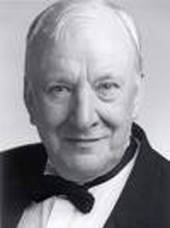

Sir Richard Rodney Bennett
All the King's Men
Short instrumentation: 1 1 2 1 - 2 2 1 0 - perc(5), pno.4ms, str
Duration: 40'
Libretto: Beverley Cross
Dedication: To the Coventry Schools' Music Association
Roles:
Cast (laut KA
UE14661)
All vocal parts have been written in the treble clef of facilitate reading but the work is equally suitable to broken or unbroken voices. If performers find difficulty with the recitative sections
these may be spoken and not sung. All five chorus groups are divisi at some point in the score so minimum numbers have been in the list above (hier: below). The Roylists and Roundheads never sing simultaneously and so can be rehearsed initially quite independently.
Royalists:
King Charles I
Queen Henrietta Maria (speaking part)
Dr. Chillingworth
King's Herald (speaking part)
Drummer Boy
King's Generals (minimum of 4)
King's Soldiers (minimum of 6
including 2 soli)
Queen's Ladies (minimum of 6
incl. 1 solo)
Roundheads:
Colonel Massey
The Messenger (speaking part)
Colonel Massey's Soldiers (minimum of 6)
Women and children od Gloucester (minimum of 6)
Instrumentation details:
1st flute
2nd flute
oboe
1st clarinet in Bb
2nd clarinet in Bb
bassoon
1st horn in F
2nd horn in F
1st trumpet in Bb
2nd trumpet in Bb
trombone
1st percussion
2nd percussion
piano for 4 hands
1st violin
2nd violin
3rd violin
viola
violoncello
contrabass
Bennett - All the King's Men
Printed/Digital
Translation, reprints and more

Sir Richard Rodney Bennett
Bennett: All the King's Men for voices, satb choir and orchestraOrchestration: for soli, mixed choir (SATB) and orchestra
Type: Chorpartitur
Language: Englisch (Großbritannien)

Sir Richard Rodney Bennett
Bennett: All the King's Men for voices, satb choir and orchestraOrchestration: for voices, satb choir and orchestra
Type: Klavierauszug
Language: Englisch (Großbritannien)
Sample pages
Audio preview
Work introduction
Richard Rodney Bennett’s moving, 45-minute children’s opera All the King’s Men was commissioned by the Coventry Schools’ Music Association. With a libretto by Beverley Cross, its model is the children’s rhyme Humpty Dumpty, very popular in the English-speaking world. Bennett’s opera is especially compelling thanks to its enchanting melodies, lively orchestration and sensitively presented characters. It is particularly suited for production by boys’ choruses and music-school children.
Historical Basis:
While the King was garrisoned at Oxford at the beginning of the war, a certain Dr. Chillingworth was enrolled by the King´s Council of War as an expert in sophisticated warfare. On August 10th, 1643, King Charles arrived outside Gloucester, where the Roundhead garrison was commanded by young Colonel Massey. Dr. Chillingworth suggested three ways of taking the town. The first was to mine under the walls, but this was baulked by rain which flooded the tunnels. The second was to cut off the drinking water in from the Severn, then set up treadmills which drove the flour mills but Massey ingeniously pumped water in from the Severn, then set up treadmills which were worked by all the citizens of the town. Chillingworth’s third suggestion involved the creation of a siege-engine similar to those used by the Romans. This was a huge machine on wheels which would roll down, bridging the Severn and forming a covered way over the walls of the City. The Romans sometimes called this type of machine a Tortoise and the troops on both sides in the Gloucester siege christened it Humpty-Dumpty. Unfortunately, the citizens found out in advance about the siege-engine and widened the river so that when the machine went into action it could not span the increased width and collapsed into the river from where “all the King´s horses and all the King´s men” were unable to rescue it. Despondently on September 5th, the King and his troops marched away, unaware that Colonel Massey had only three barrels of powder left for the defence of the City.
